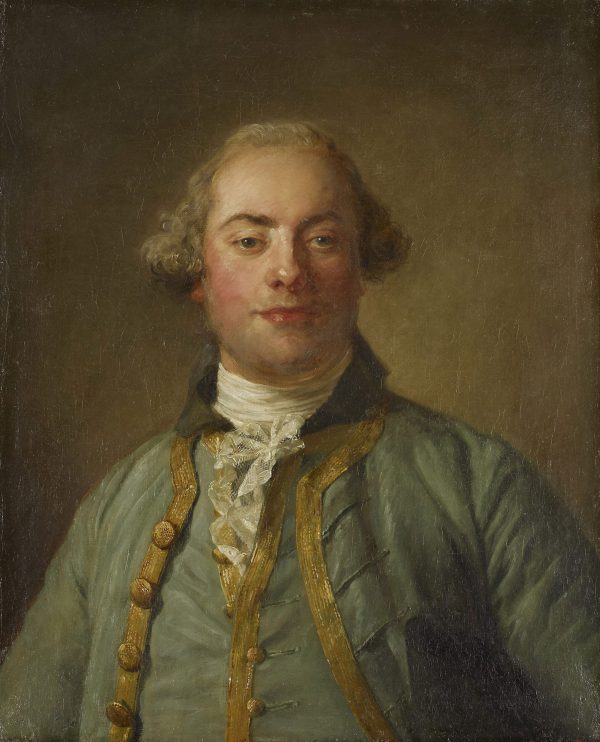Portrait of a Gentleman, 1765
Oil on canvas, H. 0.65 m; W. 0.53 m
Signed and dated upper right: Perronneau / 1765.
Provenance: Collection René Benjamin.
Private collection, France.
Léandre Vaillat and Paul Ratouis de Limay, J.-B. Perronneau, sa vie et son œuvre, Paris, 1923, p. 89 et 223, pl. 26.
Jean-Baptiste Perronneau studied at first the engraving with Laurent Cars, then the painting with Charles-Joseph Natoire. He became member of the Académie royale in 1753. Bright artist, he excelled particularly at the art of the pastel. Perronneau practiced in Paris and in many cities of France where he painted the local bourgeoisie. Afterward, his career was punctuated with journeys in Russia, Poland, Holland and Italy. Today he is considered as the equal of Quentin de la Tour, and even preferred for the biggest sincerity of his portraits.
Portraits in oil of Perronneau are rare. The light touch characteristic of his pastels is also present in his portraits painted in oil, this one is a good example. MM. Vaillat and Ratouis de Limay make a very precise description , compared with a pastel belonging to Mrs Fellows’s collection: “There is in Mr. René Benjamin’s collection a man’s portrait which offers some analogy with the precedent. Although it is about an oil painting and not about a pastel, about a rectangular frame and not about an oval, about a portrait of face and not about three quarters, the man is about the same age, wears a dress of the same tone – this delicious green blue familiar to Perronneau-, with the same braids and golden buttons. The portrait is cut up to the waist, but we do not see any more this time a three-cornered hat crossed under the arm, nor of decoration on the lace jabot which escapes from the half-opened vest. It seems also that there is more plenitude in the lines, more gentleness and spirit, a nose and lips more sensual. We can read the signature of the artist so spelt: Perronneau, and the date 1765. Mr. René Benjamin whom we questioned, was able only to indicate us that this portrait resulted from the castle of Saché, near Tours, the famous Saché from where is dated a part of the correspondence of Balzac, 7 kilometers from Azay-le-Rideau, that is in a region where we found other works of the artist.”
Our painting will be included in the forthcoming catalogue raisonné of the work of the artist in preparation by Madame Dominique d’Arnoult.
